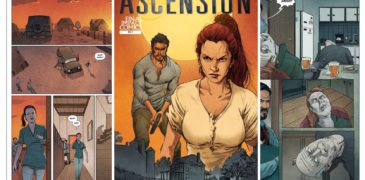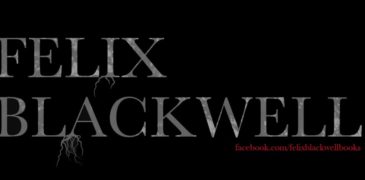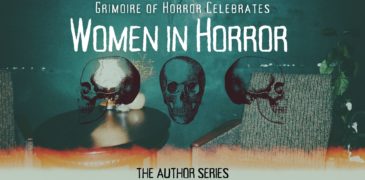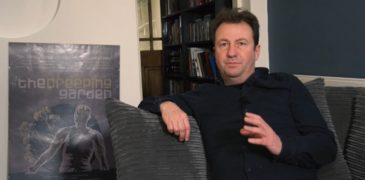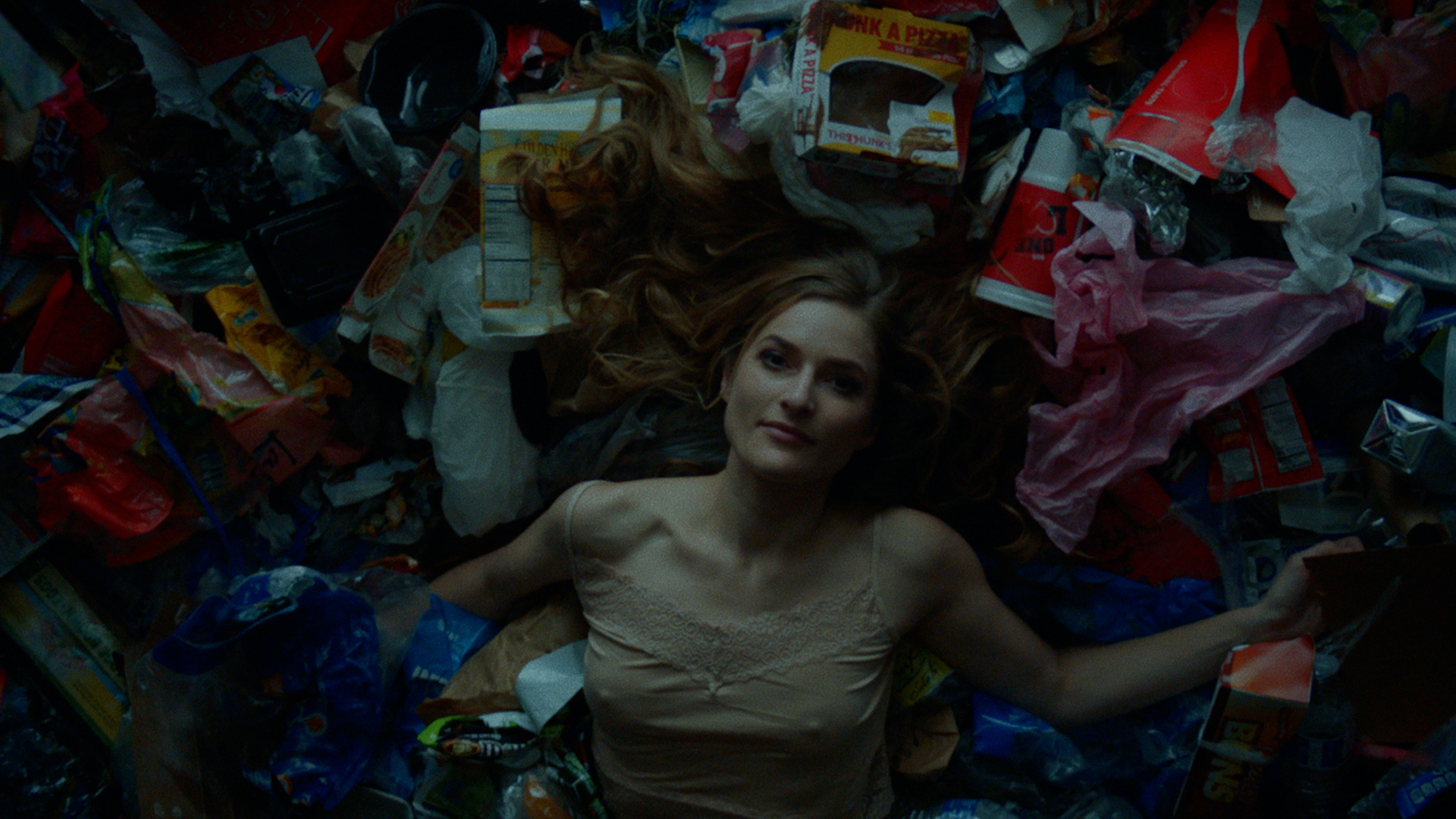
After premiering at Tribeca Film Festival last year, Samantha Aldana’s psychological body horror Shapeless starring Kelly Murtagh is now available on demand from Lightbulb Film Distribution.
For anyone who has struggled with an eating disorder or body dysmorphia, looking for cathartic media on the topic can be difficult – too often, disordered eating is glamorized, humorized, desensitized, or over-sensationalized. Shapeless refuses to do any of those things, instead presenting a raw and realistic presentation of disordered eating, one that resonated with me as a sufferer of body dysmorphia (you can read my review of Shapeless for Grimoire here)
Shapeless’ effectiveness is thanks in huge part to an emotionally harrowing performance from actor, singer, and writer Kelly Murtagh, who not only stars as troubled jazz singer Ivy but also co-wrote the story alongside Bryce Parsons-Twesten. We were delighted to sit down with Kelly to talk about her real-life inspiration for the film, her favorite horror movies, practical effects, and more.
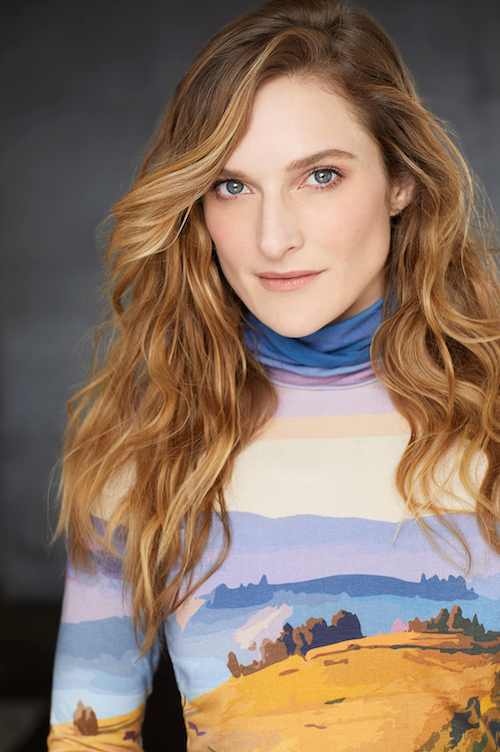
Kelly, you co-wrote Shapeless with Bryce Parsons-Twesten. Could you tell me the history behind the story of Shapeless and how it came to life?
The first time I had the idea for Shapeless was twelve years ago when I was in treatment for bulimia. I really look to art – film, books, songs, and music – to process what I’m going through, and to feel. I couldn’t find anything that was discussing an eating disorder in an authentic, honest and sensitive way. The only way I experienced it was through these short little storylines where it was usually a joke. So I had this idea, and thought to myself ‘wouldn’t it be cool to have a movie about someone who’s really struggling with this, one that shows the reality of it?’
Shapeless is sort of semi-autobiographical because I am a singer, and I had really affected my vocal cords and my ability to sing. I had this idea for a movie about a singer who has bulimia but didn’t think it would ever really happen. Then after my daughter was born, when she was about 4 months old, I just felt called to get something on paper. I was looking at her and thinking ‘how can I help her? How can I present this message to her, and to the world?’ So I got something down and sent that to Samantha Aldana, and she saw something in it that piqued her interest.
Through our conversations, she recommended Bryce, who she’s worked with on other projects. When we started working with Bryce, it was amazing. I think I had to get out of my way because I wanted to do it myself. But once I started opening up and collaborating and having these honest conversations with Samantha and Bryce, it became so much better. It was so cool to merge the two perspectives – me on the inside, and them on the outside – and create something that people can view from all different experiences.
It was the first feature-length project for you and Samantha, so it must’ve been really helpful that you both went through that experience together?
It was, I’d written some other short films and Sam had done other short films, but this was the first feature. I’m so thankful for Sam – being able to work with her was such an honor, and also a very healing, cathartic experience. It was like we were detectives. She would ask ‘what was that experience like? What was that like for you?’ and I would be saying these things that I’d never really expressed outside of therapy.
The more I was able to have these vulnerable conversations, the more I healed. Whether it was with Sam or any of the other collaborators I had the privilege of working with, we all had something to say about shame. Something about the sharing and vulnerability proved to me that I wasn’t alone.
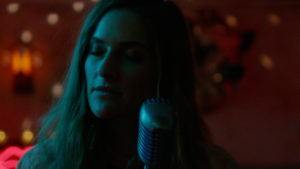
As someone who has struggled with eating and body image issues, Shapeless resonated with me because it refused to glamorize eating disorders. A lot of movies present a dangerous glamour to the very raw reality of bulimia. I’m assuming it was important for you to not sensationalize disorder eating in Shapeless?
Thank you so much for sharing, I think it’s so important for those of us who have struggled to speak up and normalize the conversation so that it doesn’t get miscommunicated. That was so important to me. That was always the litmus test: is this sensitive? That reality and that rawness of how not glamorous it is was always super important to me. It’s a sensitive, complicated topic that’s hard to explain, and I wanted someone who has experienced this and struggled with it on a daily basis to say ‘that’s what it’s like. This is what it feels like. Watch this movie, and you’ll know what it feels like.’
I think something about art – and especially film – is that you can really be transported into specific worlds and specific characters. You can really see inwards to what someone’s internal experiences are like. I hope Shapeless provides that experience of “yes, that’s what it’s like” for people who struggle with eating disorders, and for those who don’t struggle to say “oh my god, that’s what it’s like?” So many people think it’s a glamorized thing, or a diet…it’s been so misrepresented in so many ways.
Shapeless’ horror came from the realism of eating disorders and a more realistic take on body horror, but it’s also classically scary too. Why did you choose to go down a horror route with Shapeless?
I love talking horror so I’m really excited about this question! When it first started, in the early conversations, my first drafts were more of a traditional drama with one element of magic horror. I always wanted to do something in the magical realm with surrealism but I wasn’t sure what it looked like. In those early conversations with Samantha kept saying ‘this is a genre film. This sounds like a real-life horror.’ And I was like…yeah, it is! That’s the best way to describe it.
So we thought about using the lens of horror to portray the very real horror of living with an interview. It was almost a balancing act; while editing one of our cuts in post-production we leaned into more horror tropes like jump-scares. What we found was it cheapened the real horror of eating disorders so we pulled back and made the horror more of a subtle essence. It worked so much more effectively.
I think in general, when you’re playing in the sandbox of horror films, the possibilities are endless. There can be monsters and magic and faeries or whatever else to describe the human condition. I find horror films to be so effective in that way.
Are there any specific horror films you were watching while you were writing Shapeless that had an influence on it?
I think Darren Aronofsky’s Black Swan was a big influence for me. One that I also love is Get Out – Jordan Peele is so incredible, and that’s such a good representation of a horror film that discusses horrors of the human condition, such as racism.
When it came to Shapeless, it was really important to use visual language to create a sense of being watched, like there’s a monster right behind you. That’s what it feels like when you have an eating disorder.
Something that is particularly impressive in Shapeless is the body horror that was created with practical effects. I tend to think practical effects reign supreme over CGI.
I’m on the same team! We had such an incredible makeup and special effects department, and 98% of the effects were practical, with a little CGI to achieve the movement. That was fun as an actor too, I would look in the mirror [at my body] and be like ‘WOW.’ It looked so good.
It’s a really exciting time for women in film right now, especially in horror movies, where more and more women are getting the chance to write, produce and direct. As a female writer, was it important to you that Shapeless had a female director?
Yes. It was so important it was almost like a no-brainer. I don’t want to generalize and say that a male-identifying person wouldn’t have treated it with such sensitivity, but it was important. We had a lot of female department heads, and of course our DP Natalie Kingston, and that was really important to me.
There’s this myth that only women can suffer from eating disorders which is so untrue – it affects people of all genders, all races, all cultural backgrounds, all ages, and all socioeconomic backgrounds. But having such a strong female perspective and leadership on this film really lent itself to the vulnerability and the intimacy of the film, as well as the care and sensitivity that was really important to me on the set.
Can you let us know what current or future projects we can look forward to from yourself?
You can watch Shapeless now because it’s out, which is very exciting! Aside from that, I’ve been taking a little hiatus from writing and producing and I’ve been focusing on my music. That’s the beautiful thing about Shapeless. Going into the film I was so scared to sing again, and after working with an incredible voice therapist I started to sing again.
You can also see me in Disney’s Ultraviolet and Black Scorpion and I’ve filmed a couple of other things that I can’t mention yet! I’m also a children’s book author – which is funny when we’re talking about horror films – so you can check out my New Orleans-based storybook Zoo Krewe. I’m kind of simmering right now before I make my next move: but I really want to write and produce again.
I hope you make a return to horror at some point as you have a natural flair for it.
Thank you! Like I said I love horror. Let’s live in the realm of monsters, and magic, and ghosts.
Shapeless is now available to buy or rent here. Follow Kelly on Twitter @KellyMurtagh and @ShapelessTheFilm
More Interviews
Brandon Lutz is a screenwriter at Rogue Raven and the comic for Ascension is only one part of a much wider plan. He has worked on his development of a… Every indie creator hopes to make it big some day, but with limited marketing budgets and the lack of a big publisher/production company backing their projects, success is often a… Conversations With Three Influential Women in Horror While many in the horror community celebrate Women in Horror Month in February, the Grimoire of Horror is choosing to observe the celebration… Pinku Eiga, the taboo territory for many enthusiasts of Japanese Cinema. What exactly is it? Are these pictures merely exploitation flicks? Where to begin with the genre? Let’s explore the…Interview and Comic Review: Ascension Created by Brandon Lutz
Interview with Felix Blackwell, Best Selling Author of Stolen Tongues
Celebrating Women in Horror Month: The Author Series (Part 1)
Into the Pink Whirlwind: Interview with Jasper Sharp

Writer, podcaster and reviewer over at HornBloodFire.
Lover of gore, ghosts and girls getting their own back.
